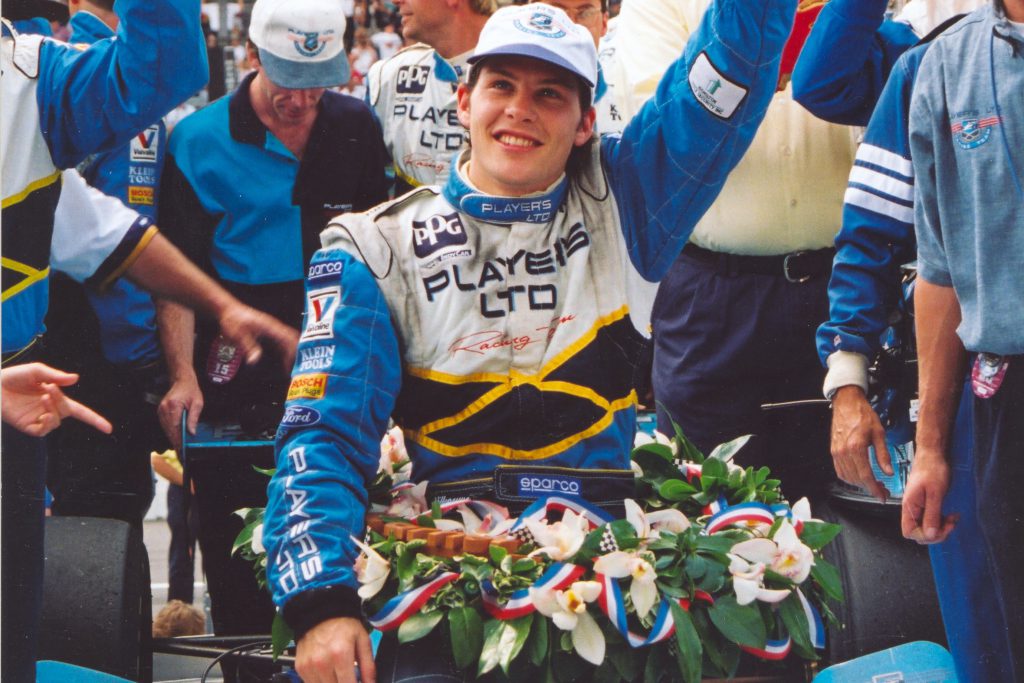They still call it the ‘505’. When Jacques Villeneuve took the white flag to start the final lap of the 1995 Indianapolis 500, commentator Paul Page said live on television: “The story will be told that Jacques Villeneuve came from two laps down to win the Indy 500”.
That’s still the headline today. But Villeneuve’s unlikely triumph after being penalised around the one-quarter distance mark for inadvertently passing the pace car was the culmination of a crazy Month of May for the final Indy 500 prior to US single-seater racing’s painful ‘split’.
Villeneuve was already being tipped for a switch to Formula 1 for 1996 when he claimed the biggest win of his career up to that point – a race he ranks above the dramatic 1997 F1 title showdown with Michael Schumacher at Jerez. But on top of the intrigue surrounding his future, the ’95 500 was a race packed with storylines through the field.
Penske failed to get a car into the race one year after dominating it; the fastest front row in history, with all three cars averaging over 230mph in their qualifying runs for the first time, was made up of entries that were not full-time; Honda was making a mark with the highest-revving engine in the field a year after failing to make the race; and Firestone returned for the first time in two decades to take on Goodyear.
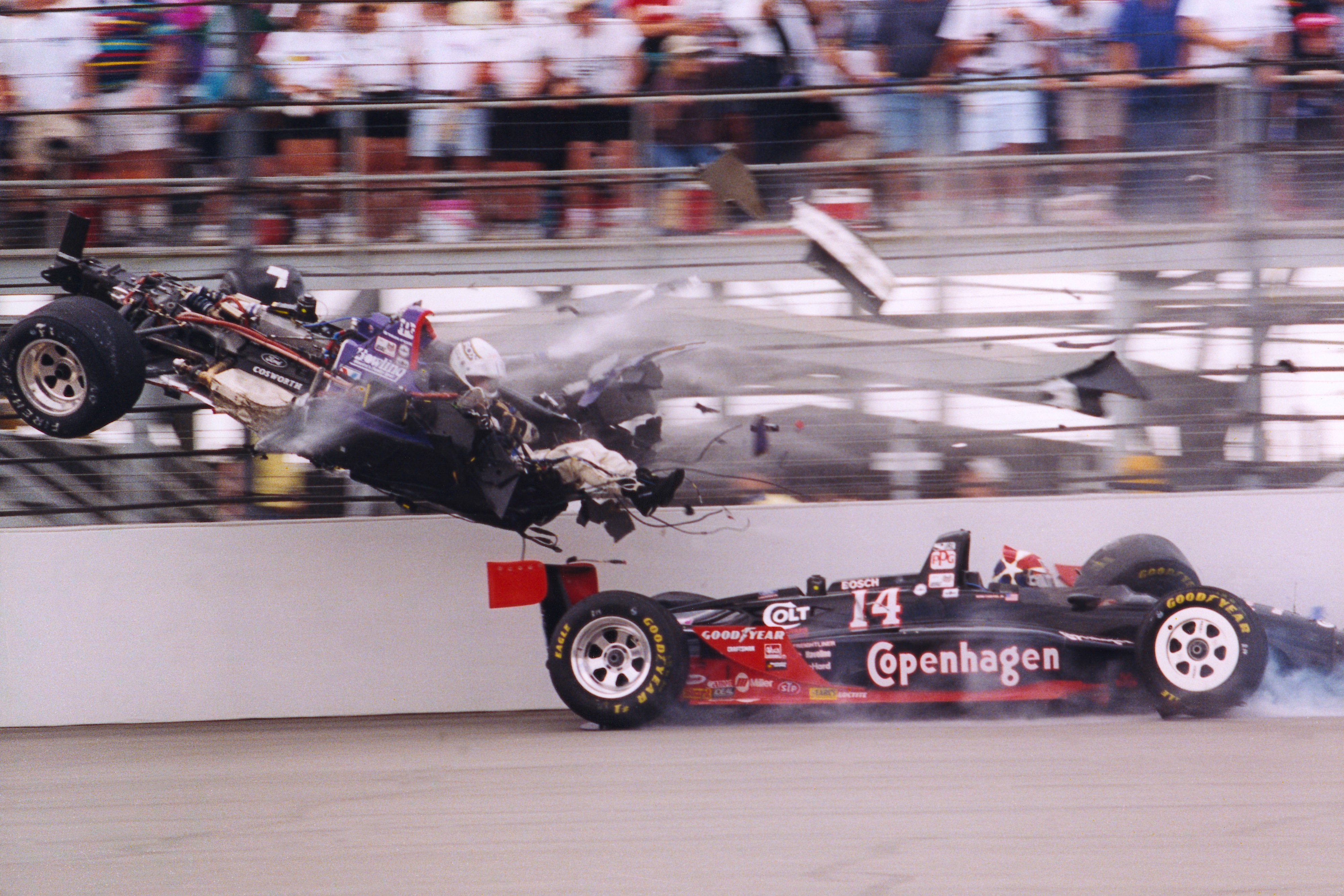
Race day was filled with drama from the green flag to the chequered, with a horrific accident just seconds after the start, and a dramatic and controversial finish with another driver completing the race distance before the official winner.
There was so much to the event that year that an article on the Indianapolis Motor Speedway website looking back at 1995 – which has been used for research purposes in this piece – is titled ‘Month of Mayhem’.
PENSKE SHOCK
The helmets were familiar. The tobacco sponsor’s name on the sidepod was familiar. But the colours were not. With the biggest crowd for Bump Day sat in the grandstands, Emerson Fittipaldi and Al Unser Jr were scrambling in the final hour to get one of their black and orange Lolas, borrowed from Rahal-Hogan Racing, into the 33-car field.
This drama came just a year after Penske had destroyed the opposition (below) with its top-secret purpose-built Ilmor-Mercedes pushrod engine, which exploited loopholes in the rules to encourage manufacturers to Indy with production-based powerplants.
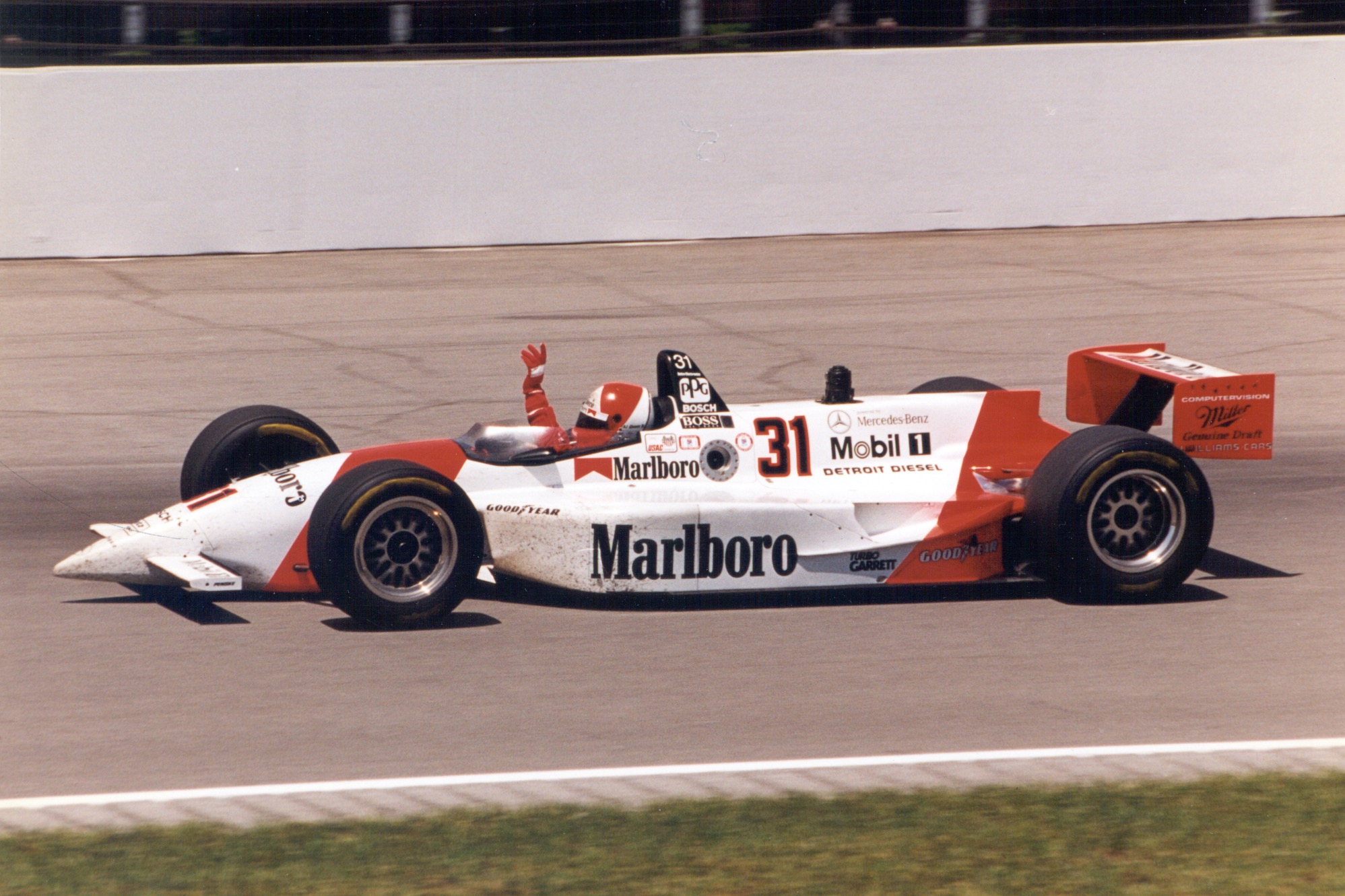
The engine wasn’t banned for 1995, but a major reduction in its boost levels meant it was effectively outlawed after one crushing victory. Penske was back with a conventional engine to defend Unser Jr’s win, but it had known as early as a tyre test in April that it was struggling for speed.
One theory from those inside the team was that the power advantage from 1994 had masked any handling problems in Penske’s chassis, which perhaps explains why an attempt to get one of the 1994 cars out from under a dust sheet didn’t yield better results. Penske didn’t run on Pole Day, knowing it had bigger things to worry about. Starting at the front was no longer the focus: just making the field was.
On the penultimate day of qualifying Fittipaldi was on a run that was set to get him into the race, but Penske took the decision to ‘wave off’ the run on the assumption that he could go faster on the final day
After struggling to get on with borrowed Reynard chassis, labelled as “junk” even though they were going well in the hands of other teams who were familiar with the design, Penske called in a favour with Rahal-Hogan. It was a role reversal from 1994, when Rahal couldn’t make the field with Honda power, and his team took on two year-old Penske-Ilmors to get into the race – finishing third.

There was no time to paint the cars red and white. Fittipaldi and Unser were running the liveries of Rahal and Raul Boesel, just with different stickers on the side.
On the penultimate day of qualifying Fittipaldi was on a run that was set to get him into the race, but Penske took the decision to ‘wave off’ the run on the assumption that he could go faster on the final day.
The 500 was everything to Unser, and he attributes the pain of not making the field that year as the beginning of his downward spiral into years of personal problems and battles with alcoholism
When ‘Emmo’ briefly got Penske into the 33-car field for the first time all month in the final hour of qualifying, he was still unhappy about the decision by the boss. “Yesterday I went faster. Much faster,” he grumbled. “There’s nothing more in the car. I was solid in the field yesterday.”
While Unser got nowhere near bumping Fittipaldi out of the race – becoming the first winner of the race to come back the following year and fail to qualify – Penske had to watch on as Stefan Johansson, usually running a customer Penske but having ditched his ’94 chassis for a year-old Reynard-Ford combination, bumped Indycar’s biggest team out of its biggest race.
“We didn’t get the job done,” said Penske, who declined to be interviewed by TV on race day, where he and the drivers were in attendance entertaining their sponsors. “We came here with two of the best drivers in the world and we didn’t give them the tools to do the job. I take full responsibility.”
The 500 was everything to Unser, and he attributes the pain of not making the field that year as the beginning of his downward spiral into years of personal problems and battles with alcoholism. Due to the IRL/CART split, he wouldn’t compete in the race again until 2000. Penske returned a year later, taking a hat-trick of wins from 2001-03.
With its most dominant team on the sidelines, and only three former winners in the field, the 1995 race was declared one of the most open in years.
PENALTY SHOOTOUT
One of the defining factors of the race – highlighted by Villeneuve’s charge back from two laps down – was the number of penalties handed out by race organiser USAC.
The officials had their hands full, penalising several drivers for speeding in the pits, although third-place finisher Bobby Rahal (below) claimed he was doing 91mph when he was clocked at 109mph. Harsh penalties were also handed out for anyone entering the pits at the start of a caution period. The pits being closed until the field has bunched up is commonplace today, but it upset many a team back in 1995.
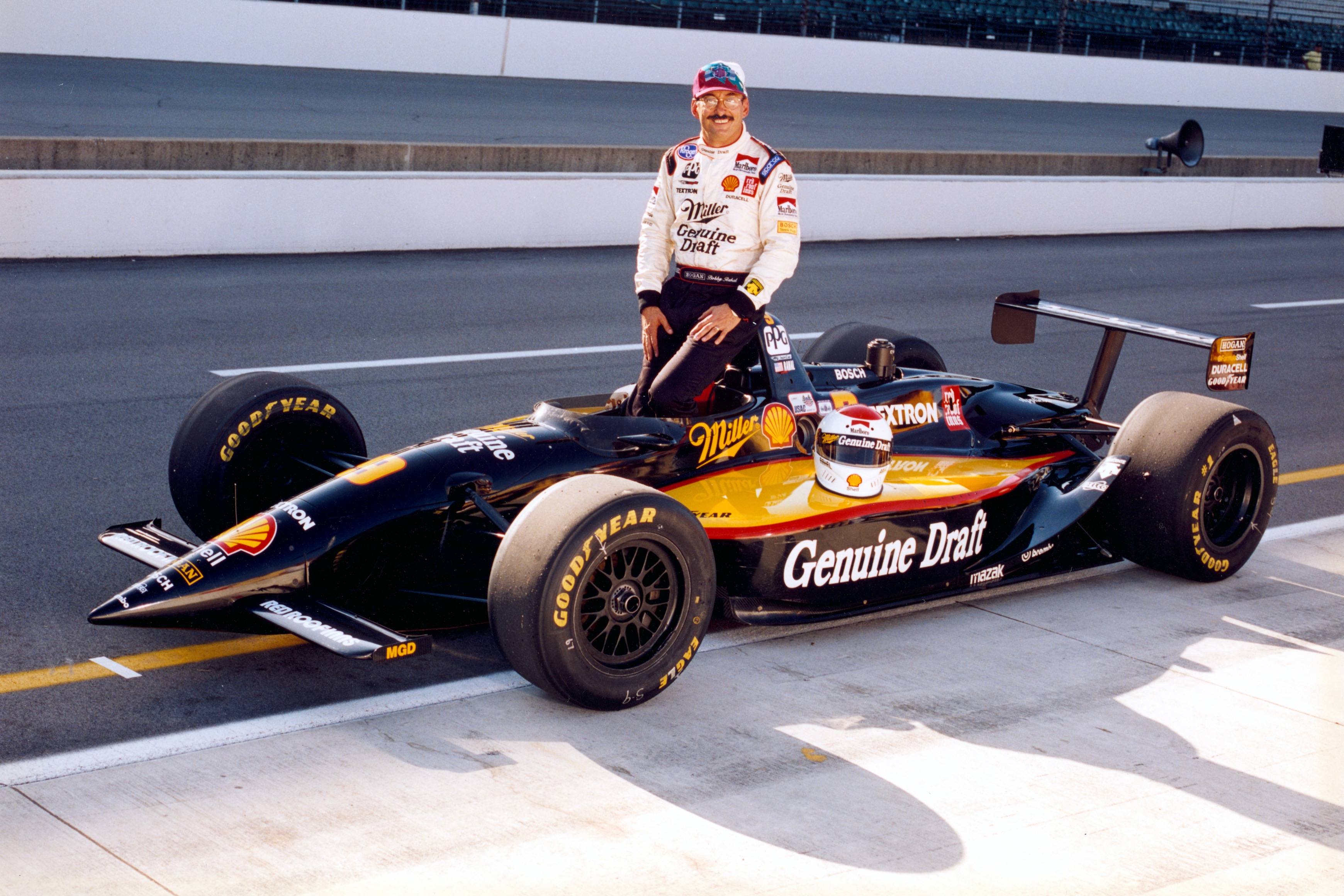
“These stupid rules,” Pat Patrick bellowed after Scott Pruett ran out of fuel waiting for the pits to open. “You can’t come in if you’re out of fuel, you get black flagged. It’s horrible, I can’t believe it.”
The cause of that particular delay in opening the pits led to the second-biggest penalty of the day.
“I didn’t know I was in the lead when the yellow fell. Everyone was flying by the pace car and I didn’t see it trying to stop me” :: Jacques Villeneuve
Villeneuve was yet to make his first stop when the caution came out for debris, after Arie Luyendyk’s headrest flew off as he gave the lapped car of Scott Sharp the finger at Turn 1.
While Villeneuve’s crew panicked over if he had enough fuel in the car to stay out until the pits opened, nobody told him he was in the lead, so every time he came up to the pace car, he passed it like every other driver was doing. Only on the third attempt did an official hang out of the pace car to signal to Villeneuve to stay behind.
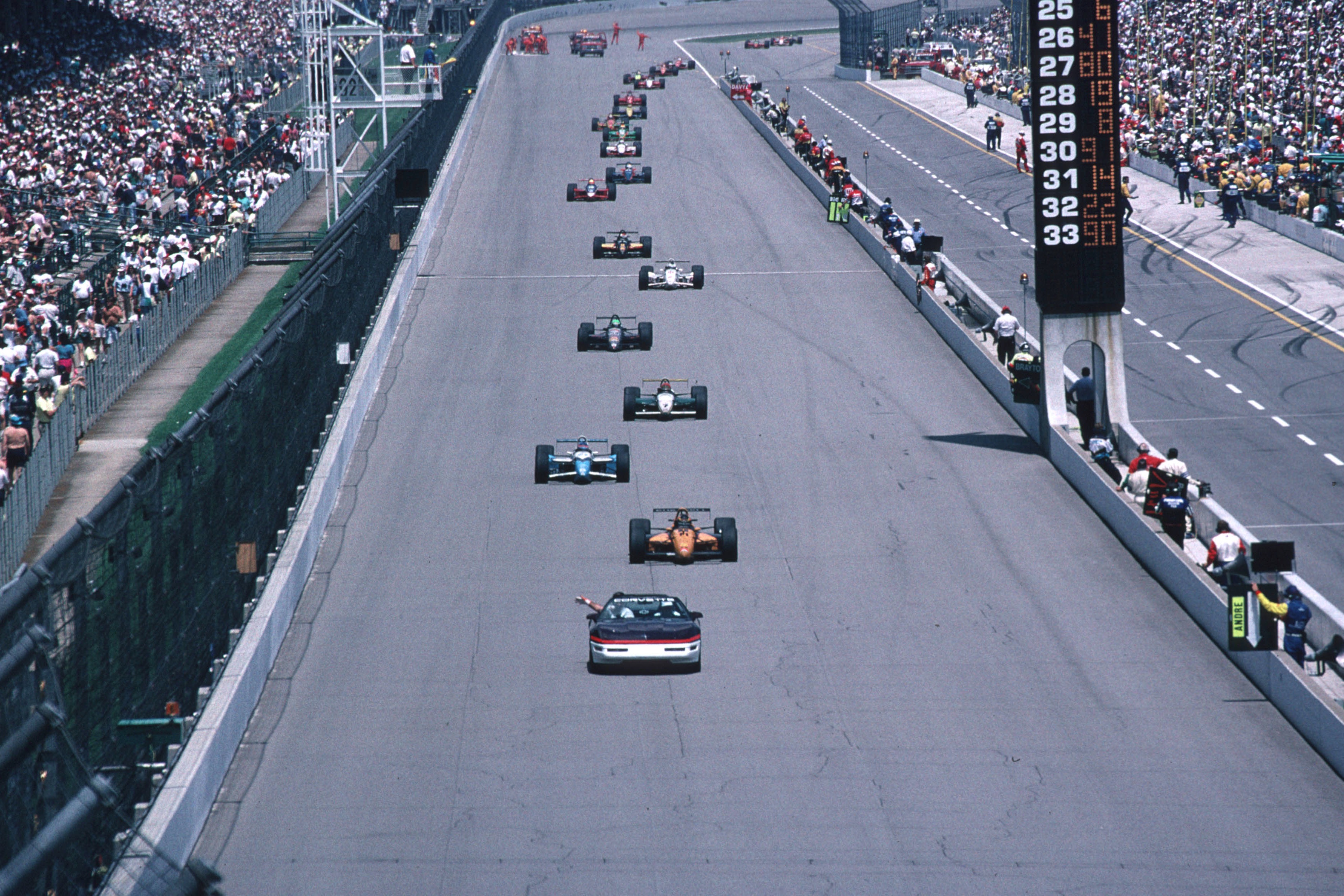
Race control acknowledged that Villeneuve “did not pick the pace car up”, but it was almost 10 laps later that it handed down the two-lap penalty. In an instant he dropped from third to 24th.
“Bad communication on our part,” said team owner Barry Green. “We should have made him aware he was the leader. We were devastated, I can’t understand what the hell they think they’re doing out there. They waved us by twice. All the driver does is do what the pace car says.”
“Normally, Indy is a race where you don’t drive to the limit. But there we were, two laps down, and I had to do qually laps the whole way through.” :: Villeneuve
Villeneuve added: “I was really really unhappy, I think I was swearing a little bit. I didn’t know I was in the lead when the yellow fell. All I was trying to do was get back to the pack. Everyone was flying by the pace car and I didn’t see it trying to stop me.”
All these years later, opinions are split on how impressive it was for Villeneuve to recover in the remaining 150 laps to win the race. Some, like Jimmy Vasser, who was in with a shot of victory thanks to his Ganassi team “playing our own card game” by getting out of sequence on fuel stops, point out that Villeneuve didn’t “drive himself to the front from two laps down”.
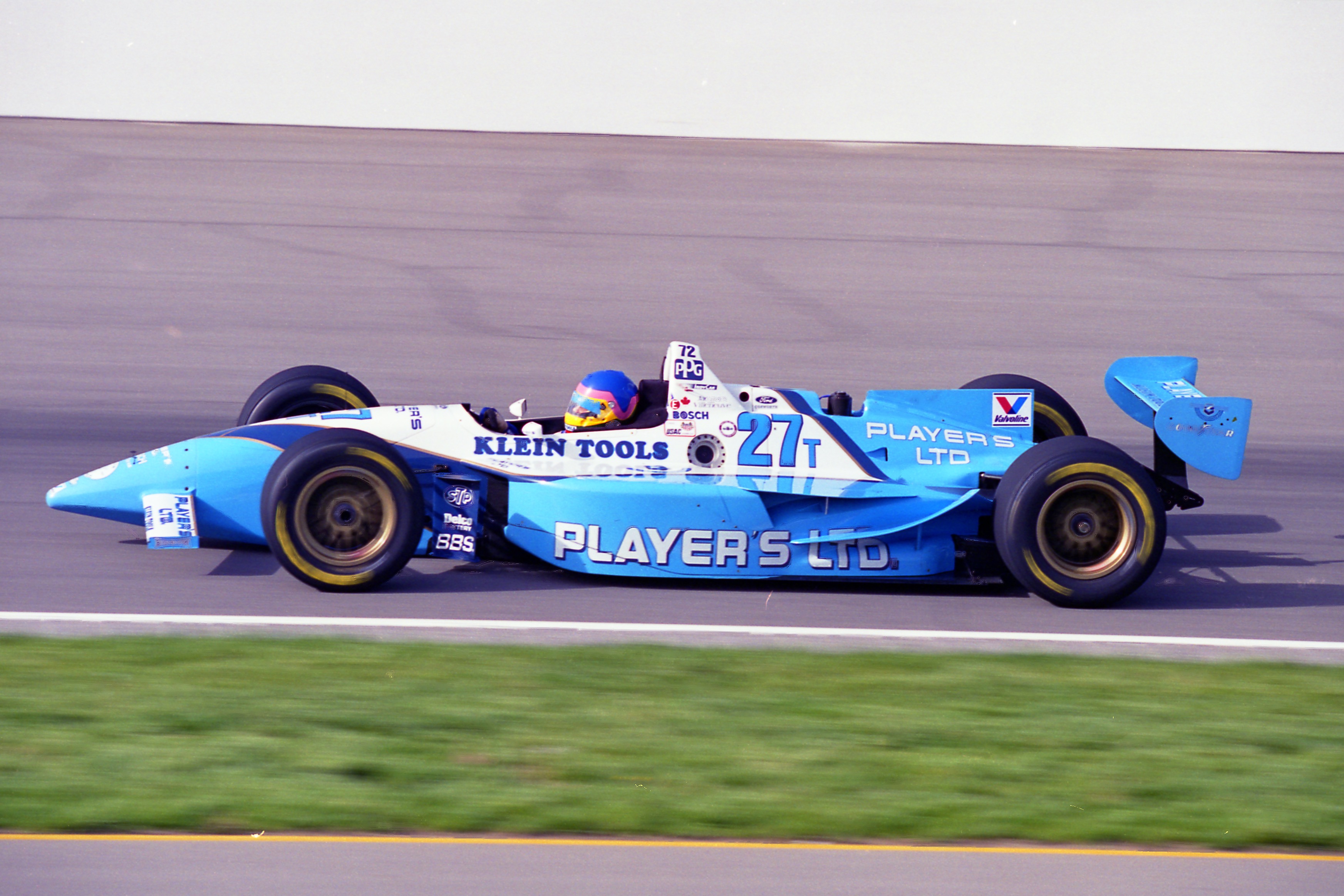
But Villeneuve’s race from there was a mix of stretching fuel and tyre life while setting the fastest laps of the race at that stage. It didn’t take him long to get one lap back, jumping the leaders during a round of stops under yellow, and restarting 20th and one lap down on lap 85 following a crash for Scott Sharp. Around 35 laps later, when the caution flew after most of the leaders had made green flag stops, he was 12th and back on the lead lap when the race resumed on lap 126.
“Normally, Indy is a race where you don’t drive to the limit,” Villeneuve told me for an Autosport ‘Race of my life’ article in 2012. “It’s a long race, it’s dangerous. But there we were, two laps down, and I had to do qually laps the whole way through.”
When the off-sequence Vasser pitted inside the final 50 laps, the fight at the front was between Villeneuve and the star Firestone runners of Pruett and Scott Goodyear
Those qualifying-style laps were helped by new Goodyear tyres brought to Indy for the final day of practice. Firestone was back at the race for the first time since the 1970s, and with Scott Pruett sitting out the 1994 season to complete more than 10,000 miles of testing, it was quick. Goodyear responded with a tyre that was untested at Indy, and its teams were cautious about using it early in the race.
“We waited for other teams to put them on to see how they would react,” recalled Villeneuve. “And just by putting them on we picked up 2mph average speed. From that point on I just started racing hard.”
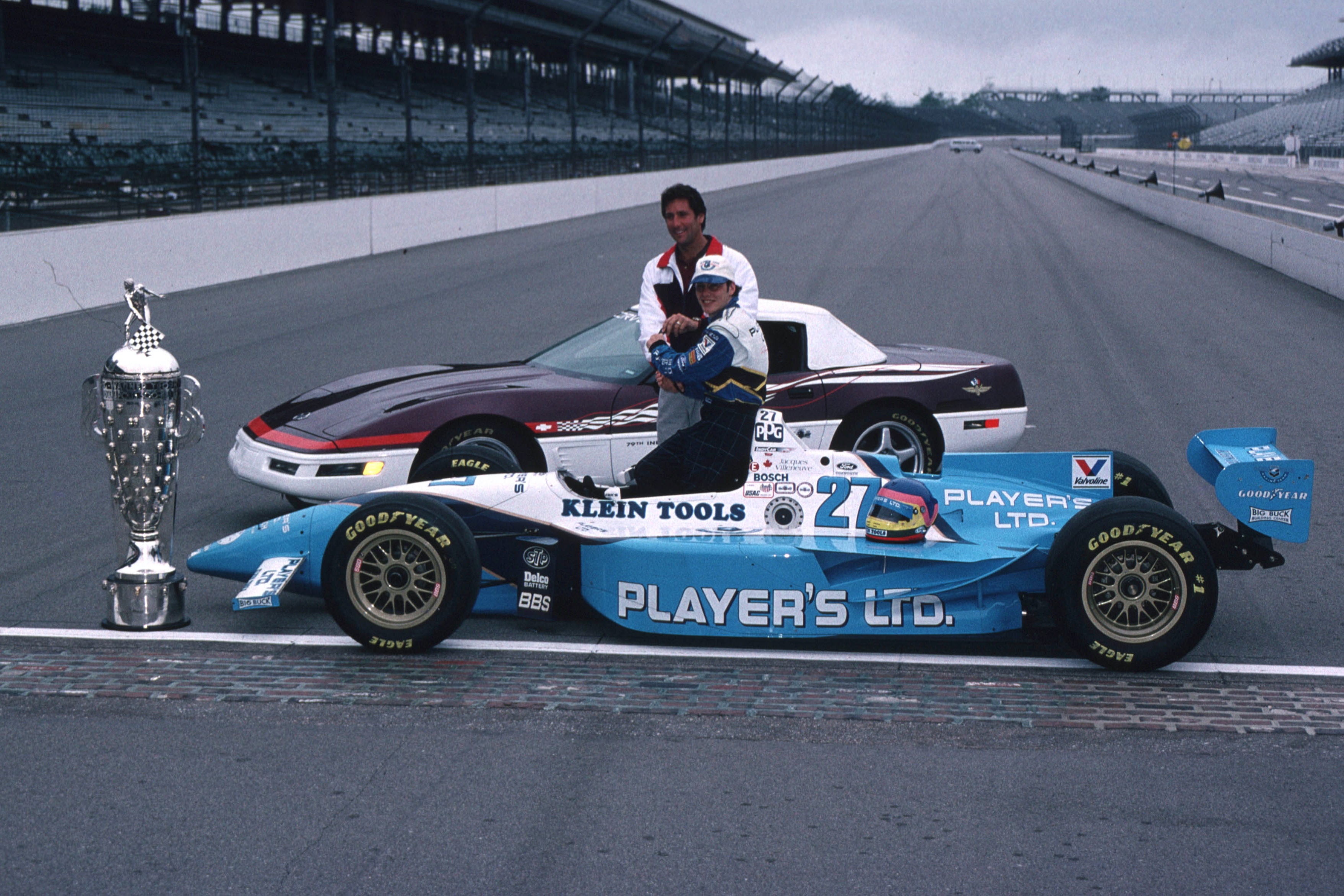
In the next 10 laps of green flag running Villeneuve climbed from 12th to seventh, which became sixth when Paul Tracy’s car came to a halt, bringing out another yellow. By this point Team Green were working backwards from the end of the race, trying to stretch it out to minimise the time spent in the pits. When the off-sequence Vasser pitted inside the final 50 laps, the fight at the front was between Villeneuve and the star Firestone runners of Pruett and Scott Goodyear.
Villeneuve’s race had already been dramatic enough up to this point. He’d stalled twice in the pits, and once tried to leave when the fuel hose was still attached. After fighting back from the penalty he nearly suffered another slice of misfortune, heading to the pit entry just as Davey Hamilton’s crash brought out the yellow and closed the pits. Villeneuve swerved back onto the circuit at the last moment, now third behind the two Scotts.
The drama didn’t end there. When the pits opened everybody came in, and in a crowded pitlane Villeneuve’s exit was delayed by Adrian Fernandez squeezing into the pit bay in front of him. He restarted fourth, chasing Vasser, Pruett and Goodyear.
CRASHING CONTENDERS
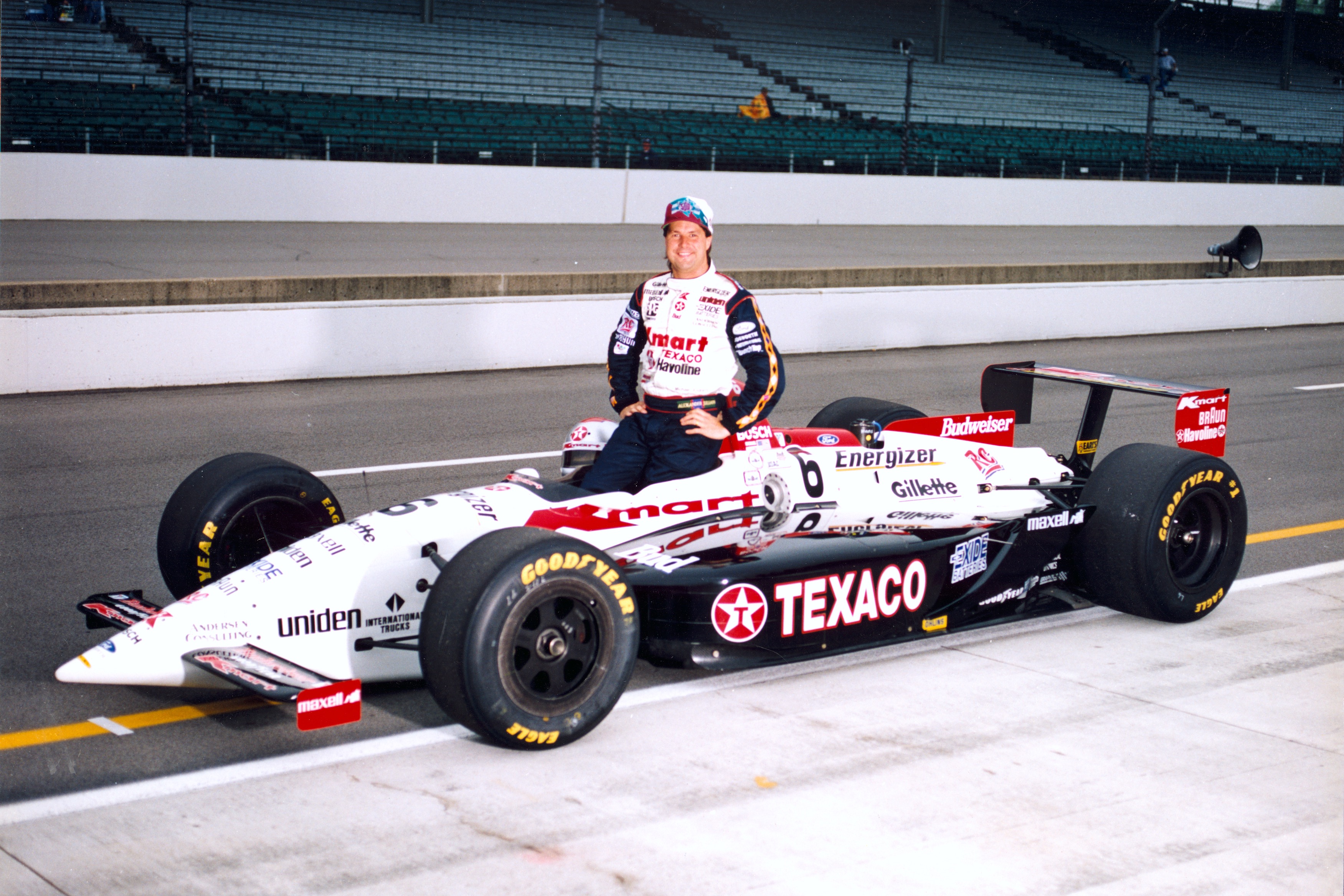
Several drivers had strong claims that the bottle of milk for the winner should have been theirs that day. Michael Andretti’s car was “the best I ever had here” until he (above) bashed the outside wall at Turn 4, misjudging a pass on the outside of Mauricio Gugelmin as the Brazilian slowed for the pits.
Andretti knew it was his error, although the penalty for getting off-line was far greater in 1995 than in previous years. The tyre war meant softer, faster compounds were being used, so marbles became a huge issue as the race wore on. Andretti said his car felt like it was “on ice” when he went wide, and he wasn’t the only victory contender to suffer that fate.
Gugelmin led the most laps of anyone, looking comfortable at the front, but he drifted back to sixth by the end, “convinced something broke” to cause his car’s handling to go away in the second half of the race.
Pruett joked in the build-up to the event that he’d deliberately played down how good the Firestone tyres were during his year of testing in the hope that not too many teams would take them
We never got to see if Vasser’s strategy could have paid off. He had the lead on a restart on lap 169, and he showed Pruett the race was getting serious when he chopped across him to hold onto the lead in Turn 1. Pruett accepted the challenge, putting a bold-but-fair pass on Vasser at Turn 3 on the following lap.
Vasser didn’t see him in time, ran up into the marbles, and moments later was in the wall. He waited trackside to gesticulate at his aggressor, but once he’d had time to digest the incident, Vasser accepted the pass was clean and Pruett “had the line, but it put me in a position that put me in the fence”. Years later he told IMS it was “not one of my prouder moments”.
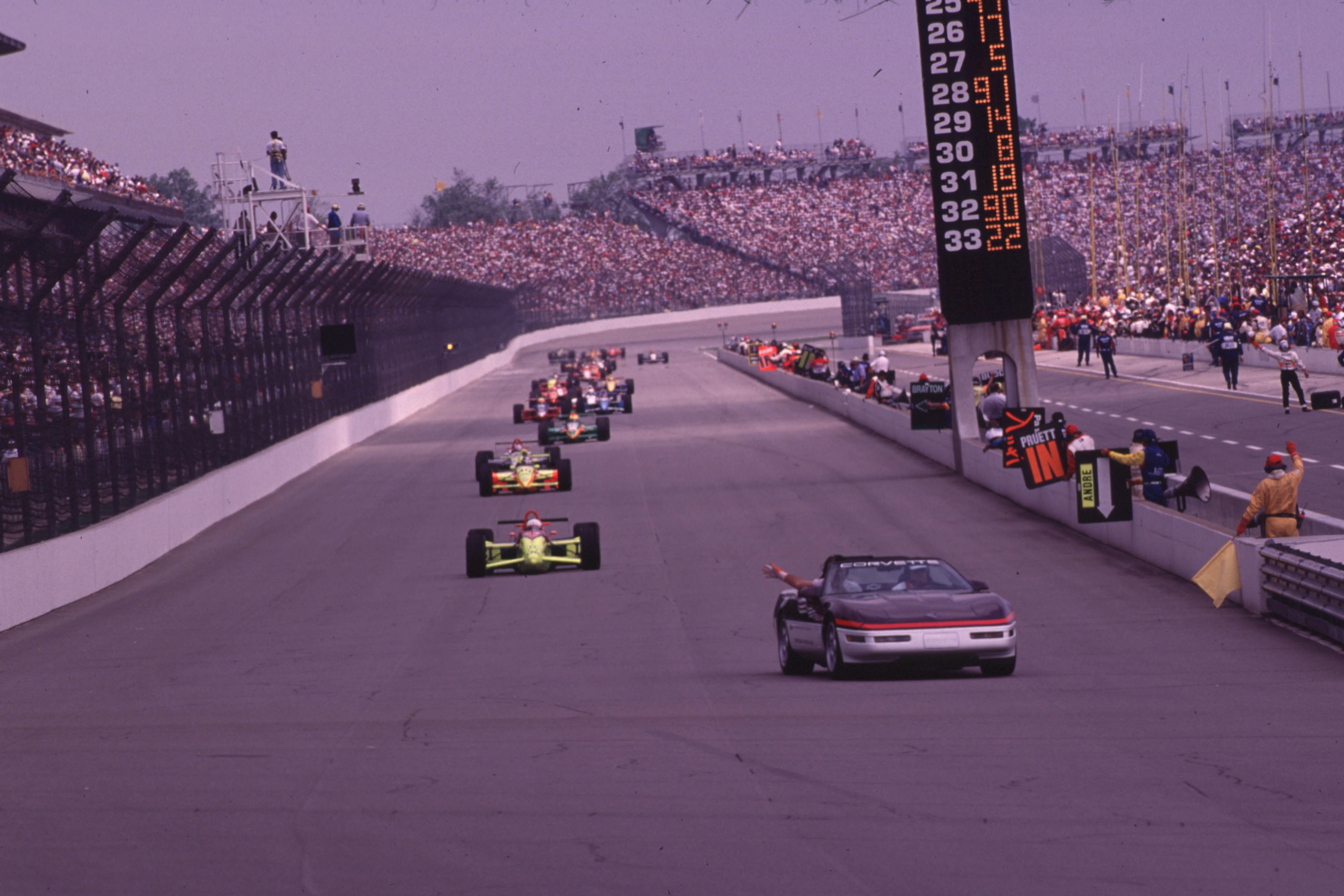
On the next restart Goodyear (leading, above) and Pruett drove away from the field. It was a two-horse race.
The wind had been gusty all day, blowing litter onto the track that was forcing several cars to pit to have debris cleared from their sidepods. In the closing stages, the reported wind speed was up from 21mph to 30mph. To make matters worse, Raul Boesel’s engine had just dumped oil on the track, which officials hadn’t spotted. Pruett lost the rear end at Turn 2 and tried to catch it, hitting the outside wall then sliding across the track and into a violent impact with the inside wall that tore the rear end off his car.
Pruett joked in the build-up to the event that he’d deliberately played down how good the Firestone tyres were during his year of testing in the hope that not too many teams would take them. His experience paid off during the race, allowing him to double-stint the softer compound to claim back the lap he lost when he ran out of fuel waiting for the pits to open.
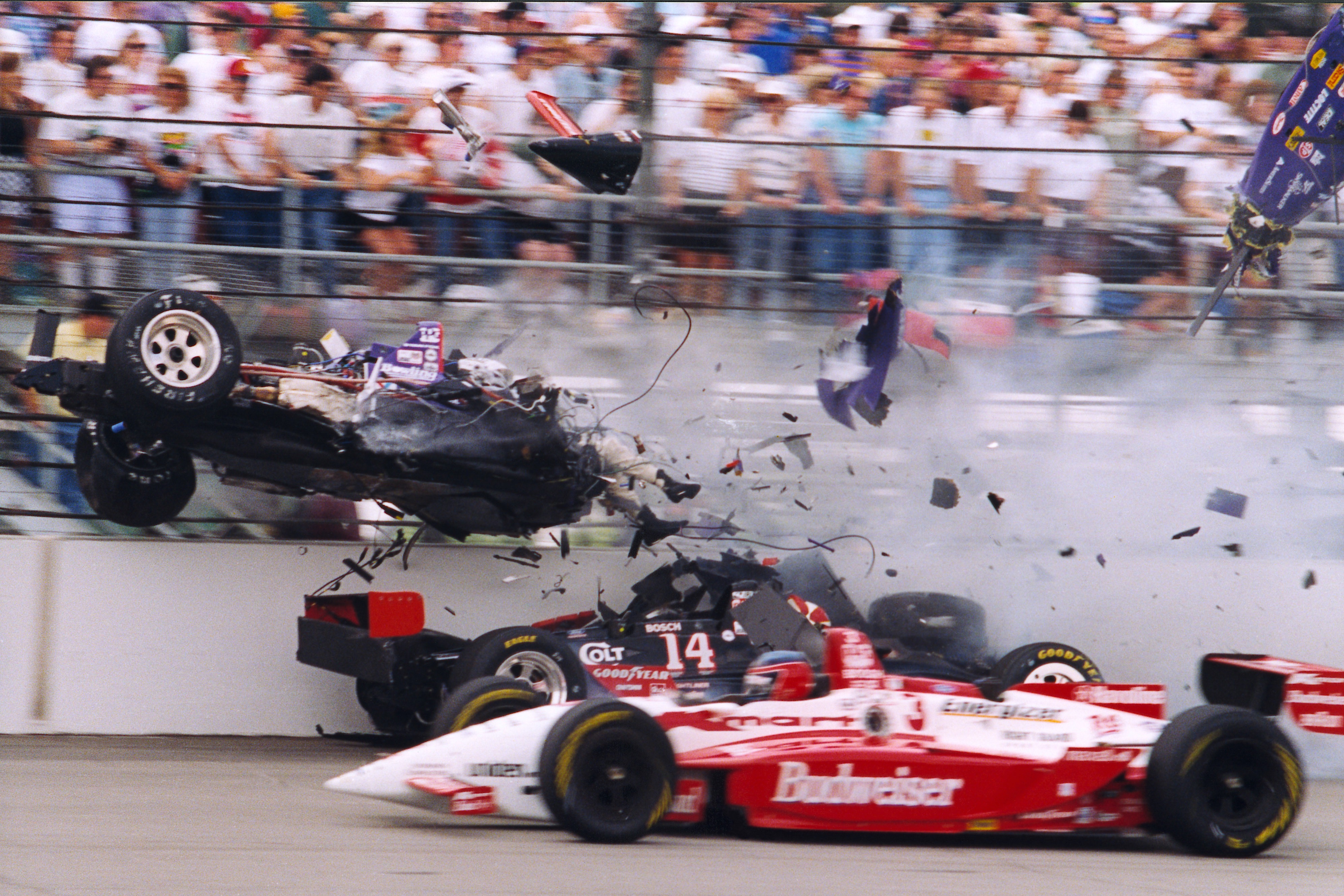
The biggest crash of the day didn’t involve a victory contender, although the harrowing images from Stan Fox’s lap one accident made him almost as famous as the big names that crashed out while trying to win the race.
Fox was a midgets and sprint car racer the rest of the year, but by the mid-1990s he was an Indy 500 regular, and he’d qualified in the middle of the fourth row. But he lost control at Turn 1 on the opening lap, spearing up the track into Eddie Cheever.
“On the lap before the green flag I just kept putting pressure on him, accelerating, braking, going next to him, dropping back from him, trying to get into his head. And it worked” :: Villeneuve
The impact lifted his car above the concrete wall, ripping its nosecone off and exposing Fox’s legs and body. He was admitted to hospital with head injuries and immediately operated on, and while he would eventually recover, his racing career was over.
Remarkably, his only external injury was a bruise to one of his feet, caused by it hitting Cheever’s rear wing while he was in mid-air. His race suit wasn’t even damaged.
THE WINNER ON THE ROAD

Pruett’s crash left Goodyear (the driver, not the tyre company) in the clear to win the race. It would have been a remarkable achievement: Goodyear wasn’t a full-time entry in the championship, and Tasman was running Firestone tyres and the Honda engine that had been laughed out of Indy a year earlier when Bobby Rahal had to borrow cars and engines from Penske to make the field.
Villeneuve thought the same as everyone else who had watched the first 190 laps: Goodyear was going to be “unbeatable”. Still, Villeneuve hadn’t come this far to not give it a try. Ahead of the restart he lurched backwards and forwards in Goodyear’s mirrors, even pulling alongside him a couple of times as they let the pace car pull away.
Goodyear was was black flagged with six to go. He stayed out, determined to take the chequered flag, and officials stopped scoring his laps when he didn’t come in
“There was no way I could keep up with him on the track,” Villeneuve recalled. “So, knowing that, on the lap before the green flag I just kept putting pressure on him, accelerating, braking, going next to him, dropping back from him, trying to get into his head. And it worked.”
Goodyear was aware of the run he’d got on Pruett from second position on the previous restart, although tellingly, Pruett said he’d eased up to avoid catching the pace car. This close to the finish, Goodyear didn’t want to risk getting out-dragged to Turn 1 by Villeneuve. He booted the throttle in the middle of Turn 3, but by the time he got to Turn 4, the pace car was only in the middle of the corner.
Goodyear kept his foot in, sweeping by the pace car. Villeneuve nearly caused a pile-up by standing on the brakes. That gave rookie Christian Fittipaldi a run on him into Turn 1, but Villeneuve was bold in his defence: “It was just a matter of who was the bigger dog at that point.”
By this point Villeneuve already knew that block was for the win. He said in Victory Lane: “When we got close to the pace car, I hit the brakes, because you can’t get past the pace car before it gets in the pits. I knew he was going to be black flagged.”
“Everybody throughout the world knows who won this race. And if I came in and we found out that I didn’t make a mistake, then what are you going to do? You don’t get it back.” :: Scott Goodyear
Goodyear was six seconds clear of Villeneuve a lap after the restart, but he was black flagged with six to go. He stayed out, determined to take the chequered flag, and officials stopped scoring his laps when he didn’t come in. By now, Villeneuve had got clear of Fittipaldi, who was holding off Rahal for second.
Immediately after the race, a shellshocked Goodyear – famous for losing out in the closest Indy 500 finish in 1992 – said it was a “surprise” not to be waved into Victory Lane when he arrived at the pits.

“Everybody throughout the world knows who won this race,” he said. “I was staying out, because in my eyes it was perfect. And if I came in and we found out that I didn’t make a mistake, then what are you going to do? You don’t get it back.”
Years later Goodyear would cite a similar situation during his karting years, where he came in from the lead to serve a penalty that officials later conceded was incorrect. To this day he still believes the pace car made its way back to the pits too slowly. He thought it must have had a problem, and he’s convinced he’d have caused a wreck behind him if he’d hit the brakes. But Villeneuve did just that, and while it bunched the field up, there was no wreck.
Goodyear still disputes any suggestion that Villeneuve psyched him out on that restart: “If he believes that and wants to think that, that’s all for him, but absolutely not”
Goodyear came out of Turn 4 on the 200th lap wondering if he’d be shown the chequered flag. He wasn’t. His countryman Villeneuve crossed the line behind him as the first Canadian winner of the Indy 500, and the first driver to win in just his second attempt since Rick Mears – fine company in Indianapolis folklore.
Goodyear and Tasman boss Steve Horne made clear they were going to compile their evidence and challenge the decision. Part of Horne’s argument was a mistaken belief that Villeneuve hadn’t raced his way back from that two-lap penalty.
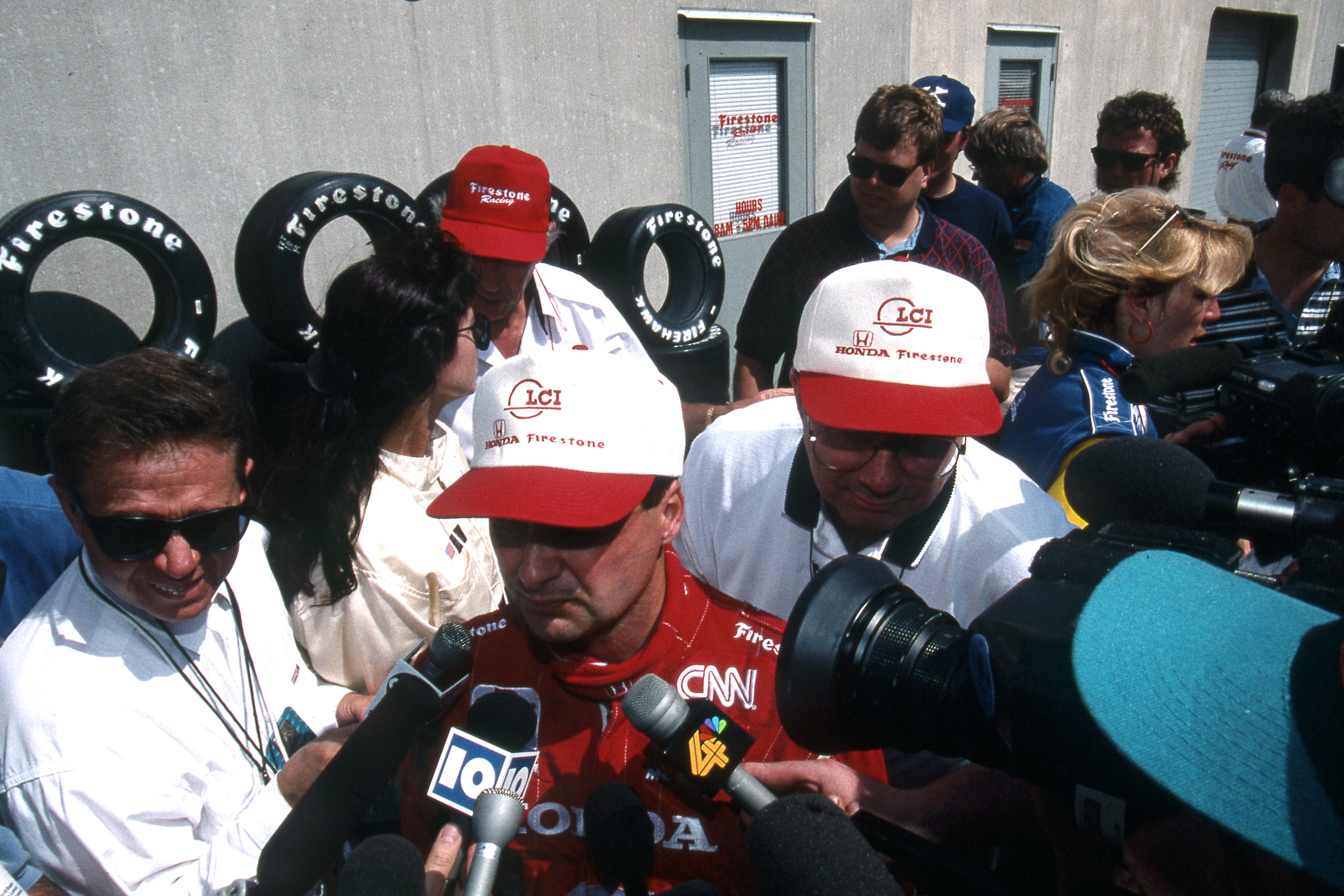
“USAC have already reversed one decision today,” Horne said. “Jacques Villeneuve did actually get a two-lap penalty for passing the pace car already and has had that reversed, so we have to go to USAC and look at the videos. It’s very clear what happened, so we just have to get the decision reversed.”
Horne was stunned into silence when he was told live on air that Villeneuve’s penalty wasn’t reversed. Goodyear said he saw a green light when he got to the pace car, but when the footage was reviewed it showed the light in question was still yellow long after he’d flown by.
There was nothing to protest. But Goodyear still disputes any suggestion that Villeneuve psyched him out on that restart.
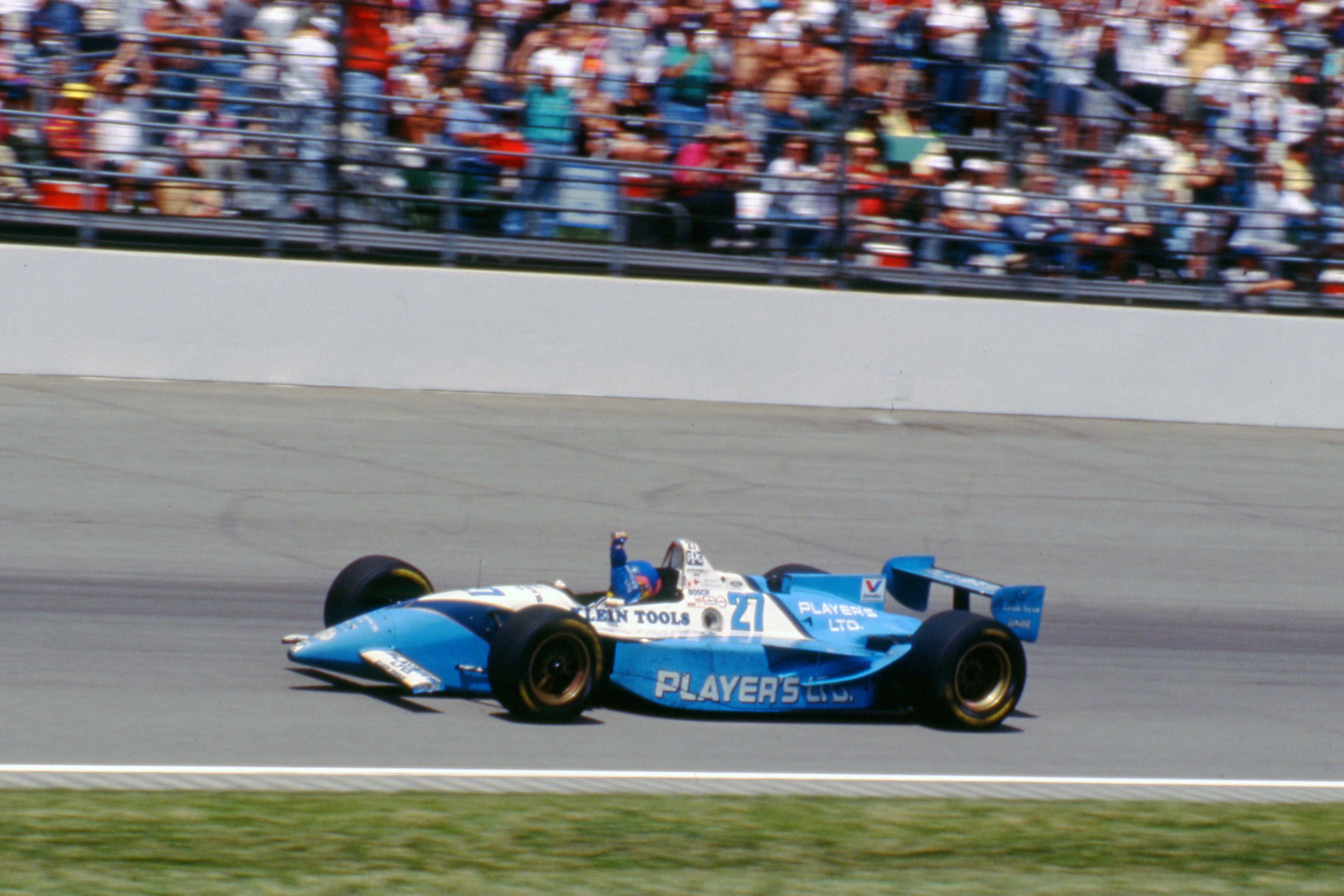
“If he believes that and wants to think that, that’s all for him, but absolutely not,” he told the IMS website years later.
It was a bizarre end to a crazy month, which seemed fitting for the final Indy 500 before the IRL/CART split. Indycar racing would never scale its mid-90s heights again.
Pictures courtesy of IndyCar and the Indianapolis Motor Speedway archive


